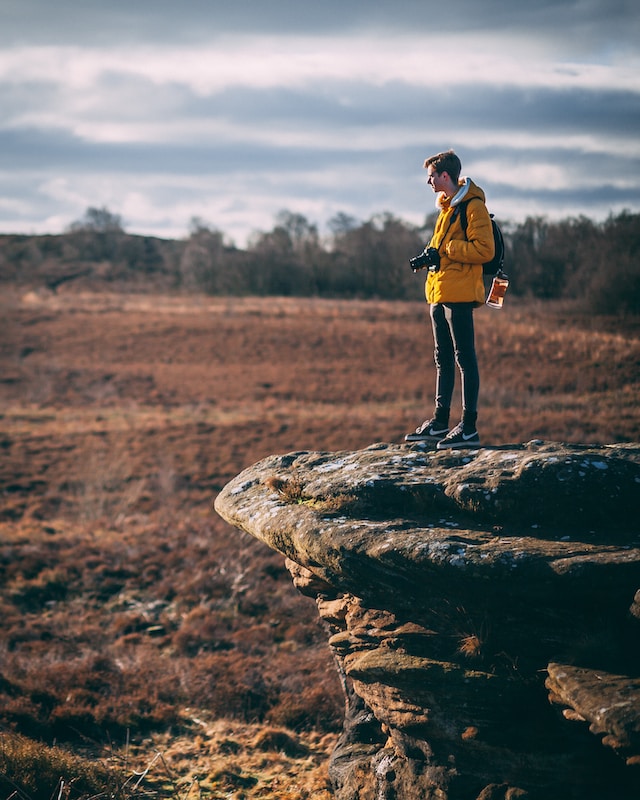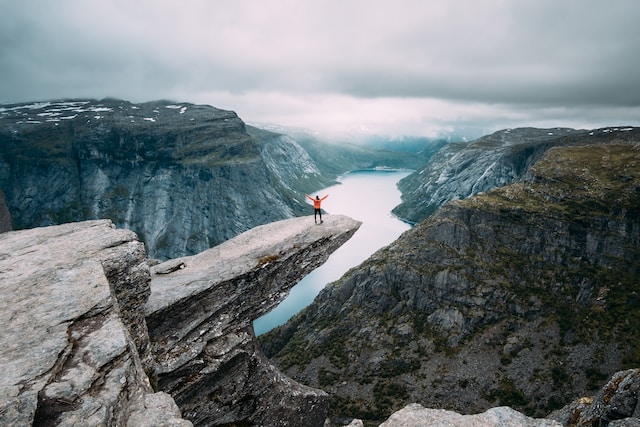
From majestic mountains to serene seascapes, and from bustling cityscapes to serene country roads, landscapes have long been revered as canvases where tales are whispered by the very essence of nature itself. The art of storytelling through landscapes goes beyond mere aesthetics; it is a profound connection between the artist and the viewer, transcending time and space. To master this photography, one must possess a keen eye, an understanding of composition, and an ability to unravel the hidden narratives within nature’s tapestry. In the realm of landscape photography, it is the task of the storyteller to evoke emotions, stimulate curiosity, and transport the observer to another realm entirely.
As the shutter clicks and the image is frozen in time, the landscape photographer must harness the power of their surroundings, choreographing a symphony of light, colors, and shapes that craft a narrative, leaving an indelible mark on the viewer’s soul. It is through the careful interplay of foreground and background, the play of shadows and highlights, and the strategic placement of elements within the frame that a story is silently woven. Stripping away the extraneous, the skilled photographer distills the essence of a scene into its purest form, allowing the viewer’s imagination to wander into untold dimensions. A deserted road at twilight becomes a gateway to an unknown path, a solitary tree atop a hill an embodiment of resilience, and a cascading waterfall a testament to the relentless force of nature.
A skilled landscape storyteller understands the importance of patience, for nature is a paradoxical muse that reveals itself only to those willing to wait and listen. The interplay of seasons, the dance of weather, and the passage of time all conspire to breathe life into a narrative frozen in a single frame.
Yet, it is not just the dramatic and grandiose spectacles that hold storytelling potential. The artistry lies in finding the whispers of stories in the seemingly ordinary, the unassuming corners that hide tales waiting to be discovered. Whether it be the pebbles on a shoreline murmuring about forgotten voyages or a dilapidated barn narrating a century-old agricultural heritage, every landscape holds secrets for those who are willing to see beyond the surface.
Colors and tones
In landscape photography, colors have the power to evoke emotions and set the mood. The warm, golden hues of a sunset can breathe life into a serene countryside, while the cool, dusky blues of twilight can hint at the mysteries that unfold under the cover of night. Tones play a crucial role in conveying the atmosphere of a landscape, with vibrant and saturated colors representing energy and vivacity, while muted and subdued tones evoke tranquility and introspection.
Composition and framing
Like the words of a well-crafted story, the composition and framing of a landscape photograph guide the viewer’s eye and direct the narrative. You can have the most sophisticated photography equipment and tools money can buy.

But without basic composition and framign skills, the resulting images will be mediocre at best.The rule of thirds, leading lines, and balancing elements all come together to create a sense of harmony within the frame. By carefully arranging the elements within the landscape, the storyteller can establish focal points, create a sense of depth, and reveal subtle details that form integral parts of the story.
Light and shadows
Light and shadows are the brushstrokes of the landscape storyteller. The interplay between light and shadow can transform a scene, shaping the mood and atmosphere of the narrative. The soft, diffused light of dawn can evoke a sense of serenity and renewal, while the dramatic play of light and shadow in the twilight hour can add an element of mystery and intrigue. By understanding the nuances of light and shadows, the storyteller can accentuate the textures, emphasize the contours, and highlight the key elements of the landscape, imparting depth and dimension to the narrative.
Creating a Mood Through Landscape Photography
The weather and atmospheric conditions can be powerful tools in setting the mood of a landscape photograph. The brooding storm clouds can create a sense of impending drama, while the gentle mist can lend an ethereal quality to a scene. The interplay of rain, fog, snow, or even a gust of wind can infuse a landscape with a certain energy and make it come alive. By embracing the ever-changing nature of weather, the storyteller can add layers of complexity to the narrative, transporting the viewer into a world beyond the visual.
Humans, as inhabitants of landscapes, add an intriguing dynamic to storytelling. Whether it’s a lone figure hiking through a rugged trail or a group of friends picnicking by a tranquil lake, the presence of human elements can help establish a connection between the viewer and the landscape. It allows the viewer to relate to the scene on a personal level, making the narrative more relatable and engaging. These human elements can also serve as a juxtaposition to the grandeur of nature, reminding us of our place within the larger tapestry of life.
A landscape is more than just a visual representation. It embodies a sense of place. It encapsulates the history, culture, and spirit of a location. By capturing the unique essence of a landscape, the storyteller can transport the viewer beyond mere aesthetics and into a realm where the landscape becomes a character in its own right. Whether it’s the rolling vineyards of Tuscany, the rugged cliffs of the Scottish Highlands, or the bustling streets of Tokyo, each landscape has its own story to tell. By immersing oneself in the atmosphere, capturing the details that make a place distinctive, and highlighting the elements that define its identity, the landscape storyteller can create a lasting impression that resonates with the viewer’s imagination.
Storytelling Through Landscapes
In landscape photography, storytellers strive to capture the essence of nature’s tales through carefully crafted compositions. Through a mastery of composition, lighting, and atmospheric conditions, the landscape becomes a canvas upon which narratives unfold.
Beginning: Introducing the Setting
A landscape photographer must carefully select locations that possess a unique character and evoke a sense of wonder. Whether it is a rugged mountain range, a tranquil forest, or a vibrant urban street, the setting sets the stage for the story to unfold.

To convey a sense of place and provide a context for the narrative, wide shots are employed at the beginning of the story. These expansive views showcase the landscape in its entirety, inviting the viewer to step into the scene and embark on the journey alongside the photographer.
Middle: Building the Story
Within the vast expanse of a landscape, focal points and leading lines serve as guideposts, leading the viewer’s eye deeper into the narrative. By strategically placing these elements, the storyteller creates a visual path that invites exploration and uncovers hidden details.
When storytelling through landscapes, the landscape photographer can utilize different elements in the scene to reveal progression. Seasons, weather patterns, and the passage of time become integral parts of the narrative, allowing the viewer to witness the fluidity and evolution of the landscape.
End: Concluding the Narrative
To conclude the narrative, the landscape photographer crafts a visual element that leaves a lasting impression on the viewer. This could be a striking sunset, a solitary figure disappearing into the distance, or a dramatic change in lighting that signifies a turning point in the story.

Finally, the landscape storyteller has the power to determine whether to provide a sense of resolution or leave the story open-ended. A resolution ties up loose ends and provides a satisfying conclusion, while an open-ended narrative allows for interpretation and invites the viewer to continue exploring the landscape with their imagination.
The Role of Viewer’s Personal Experiences
Every person views a landscape through their own unique lens, shaped by their individual experiences, memories, and emotions. Storytelling through landscapes has the potential to tap into these personal narratives and evoke a deep emotional response. Just as a familiar scent can transport us back in time, a well-crafted landscape image can elicit a flood of emotions, creating a powerful connection between the viewer and the scene captured.
Tranquility and Serenity
In the hustle and bustle of everyday life, there is a yearning for moments of peace and serenity. Landscape photographs that portray calm, serene settings can provide a visual respite, allowing the viewer’s mind to rest and find solace. These images often feature gentle reflections on tranquil waters, soft light filtering through a dense forest, or the untouched beauty of a secluded beach. By immersing ourselves in these scenes, we can momentarily escape the chaos of the world and find a sense of inner peace.
Isolation and Loneliness
Certain landscapes can evoke a sense of isolation, reminding us of our vulnerability and insignificance in the face of nature’s vastness. A lone tree standing against a barren landscape, a desolate stretch of coastline battered by crashing waves, or a vast desert with endless dunes can stir feelings of solitude and reflection. These images can prompt introspection about the human condition and our place in the world, often leading to a mixture of melancholy and appreciation for the beauty found amidst isolation.

Grandeur and Awe:
Landscapes that exude grandeur, whether it be towering mountains, expansive canyons, or dramatic waterfalls, have the ability to inspire awe and admiration. These majestic scenes capture our attention, making us feel small in comparison to the vastness and power of nature. Photographs showcasing breathtaking vistas, epic cloud formations, or spellbinding sunsets can instill a profound sense of wonder and reverence. In the presence of such landscapes, we are reminded of the wild, untamed beauty that exists beyond our daily lives.
Making a Difference through Landscape Photography
Landscape photographers play a crucial role in addressing climate change by documenting its impacts on natural landscapes. Beyond capturing visuals, they aim to spur action, using their images to raise awareness and support conservation efforts. Collaborating with environmental organizations, their work becomes a visual call to action, encouraging a global commitment to environmental responsibility. By showcasing positive examples of resilience and sustainability, these photographers inspire practical steps towards a more eco-friendly future. In essence, their images serve as a powerful tool to initiate conversations and drive concrete actions for the preservation of our planet’s landscapes.
The art of storytelling through landscapes extends beyond the visual beauty captured within a frame. It reaches into the depths of human emotions, connecting the viewer to their own personal experiences. Landscape photographers, through their careful composition and deliberate use of light, have the power to evoke tranquility, isolation, grandeur, and a myriad of other emotions. By allowing ourselves to immerse in these visual narratives, we can embark on an emotional journey, transcending the physical realm and immersing ourselves in the power and beauty of nature.